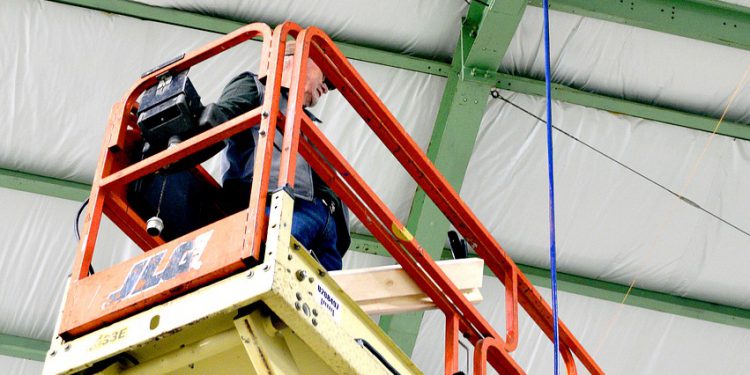When it comes to loading heavy machinery onto a trailer, there are a number of things that you need to be aware of before proceeding. Sure, it might sound simple enough, loading a scissor lift onto a trailer; after all, what could possibly go wrong? Well, that’s just it, there is an awful lot that can go wrong if you are careless and cocky with your approach. It doesn’t matter how much experience you have, or how many times you may have loaded heavy machinery onto a trailer, accidents can and do happen, which is why you must take every precaution, every single time. In this article—as you may have already guessed—we’re going to take you through the safest way to load a scissor lift onto a trailer.
Preparation is essential. Safety measures must be implemented to ensure that you are safely mitigating liabilities and avoiding construction accidents to protect both you, and your employees.
1 – Risk Assessment
When loading heavy equipment, you are responsible for making sure that everything is in working order. A risk assessment is a pre-emptive technique that allows you to sharpen up your fleet management processes and keep injury or risk of property damage to an absolute minimum.
2 – Always with the PPE
Since you are in the construction industry, you will have had the importance of PPE drilled into you from the get-go, so we won’t go into too much detail. You know why it is necessary to be geared up properly, so make sure that you are before going ahead.
3 – Inspect your Trailer
Inspecting the hauling capacity of your trailer is not only important for the loading sequence itself, but for the transportation as well. It’s all very well successfully loading your scissor lift if you end up having an accident mid-transit due to an overlooked defect.
- Tyre pressure is essential. Regularly loading heavy equipment onto a trailer will take its toll eventually. You must check the tyre pressure every single time.
- Front and rear brake lights must be fully functional, day or night.
- Just as your tyres are affected by regular hauling, so too are the brakes.
- Check your tie-down points before going ahead and securing your scissor lift.
- Weight capacity: is your trailer suitable to support the weight of a scissor lift?
Loading your Scissor Lift onto a Trailer
Loading is simple so long as you tick every box before proceeding. Here’s what you need to do:
1 – Designate responsibility
Assuming that you are not loading a scissor lift without an extra pair of hands, clearly designate between you and your colleagues, who is doing what. Spotter or driver, it doesn’t matter, clarity and communication are essential.
2 – Clean your ramps
It might sound a little daft to some people but cleaning the ramps is an essential part of the loading process. It’s not about having nice, shiny, and aesthetically pleasing ramps, but because oil, dirt, and other substance build-ups can cause serious problems. A clean and dry ramp enables suitable friction absent risk.
And of course, whilst on the subject of ramps, what condition are yours in? Which material do you use? Settling on the perfect loading ramps is essential for being able to load heavy machinery frequently and without issue. You can find plenty of Aussie made aluminium loading ramps for sale on the market, which are highly recommended for loading scissor lifts onto trailers.
3 – Clear the area
Depending on the situation, you might not have a huge amount of space to manoeuvre. In any case, you’ll want to clear the loading area of any debris and ensure that you are loading on as even a surface as possible.
4 – Line em’ up
Next up you’ll want to pilot the scissor lift and get everything lined up perfectly symmetrical with the loading ramps. As you are surely aware, approaching at an angle is utterly ridiculous and terribly dangerous. Keep moving gradually using your spotter (or vice versa) to help you position the scissor lift perfectly for the loading procedure.
5 – Load your scissor lift onto the trailer
Once you are suitably lined up, you can slowly begin driving up the ramp. Remember that when on the ramp, the machine’s centre of gravity is going to shift; this is the most dangerous part of the process, so keep it moving steady and gradual until you make it over the crest.
Remember that when positioning your scissor lift on the trailer, to balance the weight towards the front of the trailer.
6 – Chain/tie down your heavy equipment
Before moving the trailer anywhere, first you need to ensure that your scissor lift is thoroughly secured.
- Tight and secure
- Use all manufacturer-labelled tie-down points (securing the appropriate points is essential)
- Fasten chains linearly using downward force
- There must be NO slack
- There should be at least FOUR chains in use (one for each corner)












